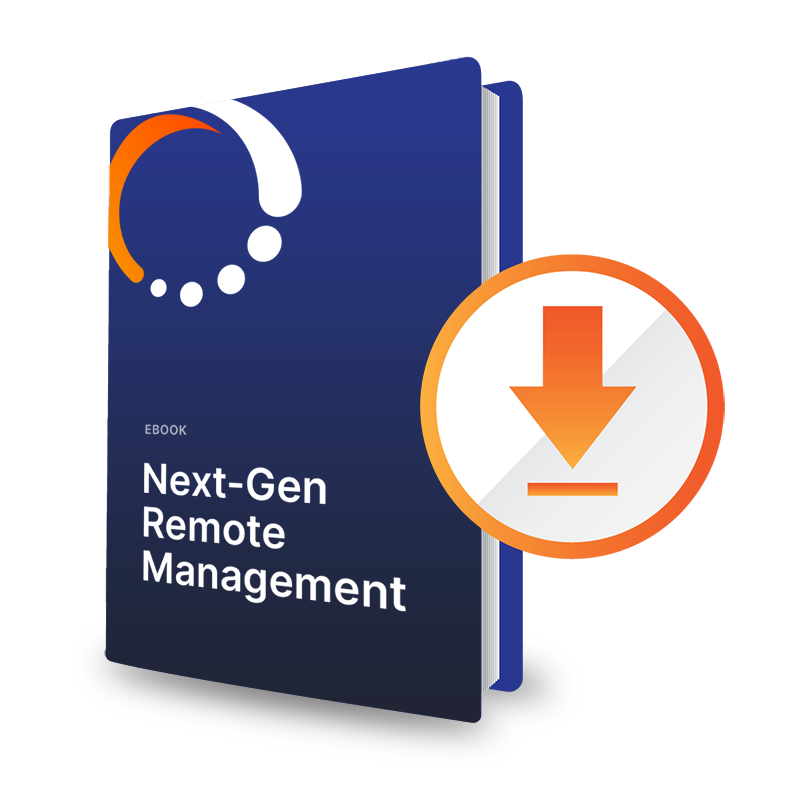5 Trends to Watch in Remote Device Management and Monitoring
Creating great customer experience now requires the ability to simultaneously manage many different systems and seamlessly integrate them.

The rise of connectivity, overlapping technologies and Internet of Things (IOT) functions across all aspects of everyday life means an ever-growing need for effective and efficient remote device management. More and more devices are becoming interconnected and automated, allowing businesses to reach new customers and scale to meet new demand. It all adds up to this: from self-service kiosks to connected kitchens to new artificial intelligence applications, RMM capability remains a top tech trend for 2023.
Here are some of the top trends to watch:
1. Composability
Composability allows for seamless user experience by turning tech stacks into a singular, fluid work environment. By creating workflows that jump fluidly between applications, users aren’t required to manually travel between apps. Composable data and infrastructures offer the ability to store and disseminate different resources to remote devices. A highly composable system provides components that can be selected and assembled in various combinations to satisfy specific user requirements.
According to a recent article in Forbes, research giant Gartner predicts that, in 2023, 60% of mainstream organizations will list becoming a composable enterprise as a strategic objective and those companies are likely to outpace their competitors. Creating a delightful customer experience now requires the ability to simultaneously manage many different systems and seamlessly integrate them. That will require an increase in remote device management and monitoring software and capabilities in the coming year as tech ecosystems become increasingly complex.
2. MQTT
MQTT (Message Queuing Telemetry Transport) will continue to gain a foothold in 2023.
MQTT is a lightweight open messaging protocol that provides resource-constrained network clients with a simple way to distribute telemetry information in low-bandwidth environments. MQTT is used for data exchange between constrained devices and server applications. It keeps bandwidth requirements to an absolute minimum, handles unreliable networks, requires little implementation effort for developers, and is, therefore, ideal for machine-to-machine (M2M) communication.
MQTT enables computers, smartphones, cars, refrigerators, thermostats, wearables, remote sensors, and other smart devices and machines to talk to each other and exchange information. As expectations around connectivity increase for companies and consumers, the ability to manage MQTT will increase the need to smart software platforms that can remotely manage disparate systems, prevent downtime, and create visibility across systems that allows for troubleshooting before components of networks fail.
3. Automation
In 2023, enterprise automation using low and no-code technology is expected to increase by more than 50 percent as organizations embrace this cost-effective and efficient way of automating processes and applications.
Enterprise automation is the process of using software to automate manual or repetitive business processes. It can be as simple as using a spreadsheet to track and manage inventory or as complex as a system of integrated applications that completely automate a company’s business processes.
According to a Deloitte survey, 53 percent of organizations have already started implementing robotic process automation (RPA). Meanwhile, Gartner forecasts that, by 2024, hyper-automation will allow organizations to lower operational costs by 30 percent. By 2025, the market for hyper-automation software will hit nearly $860 billion. Hyper-automation helps in detecting, evaluating and automating business processes.
As more organizations want to improve their security initiatives, for example, there will be a rise in hyper-automation adoption.
4. Industry Trends
Key industries are capitalizing on connectivity, including hospitality and businesses that use self-service kiosks.
Smart kitchens have proliferated, driven by the pandemic and now to bypass labor issues and improve customer experience. Restaurants, from fast casual to fine dining have turned to technology to offer the latest in efficiency and experience, creating self-service options that speed service and relying on back-of-the-house systems that keep entire restaurant operations running more smoothly.
Beyond restaurants, self-service kiosks across retail environments have become the norm, but keeping each kiosk up and running smoothly has increased the pressure on remote monitoring and management software to provide new and better ways to allow network operators to configure their alert systems to their specific needs and automate troubleshooting capabilities. That need will only grow in the next year.
5. Better Management
Preparing for the growth in need for remote device management and monitoring, the Canopy platform continues to improve performance and scalability to handle more and more events as device onboarding continues to grow.
Industries and businesses in need of reliable, consistent software solutions for the management of complex and large-scale networks are finding Canopy to be the ideal solution for single source visibility and for growth strategies.
Providing flexible, configurable solutions will continue to be a priority in 2023 for Canopy, along with giving clients more power to manage their unique implementations.
If you would like to learn more about the Canopy platform, we would love to hear from you. You can contact us or schedule a free demo to see results right away.













